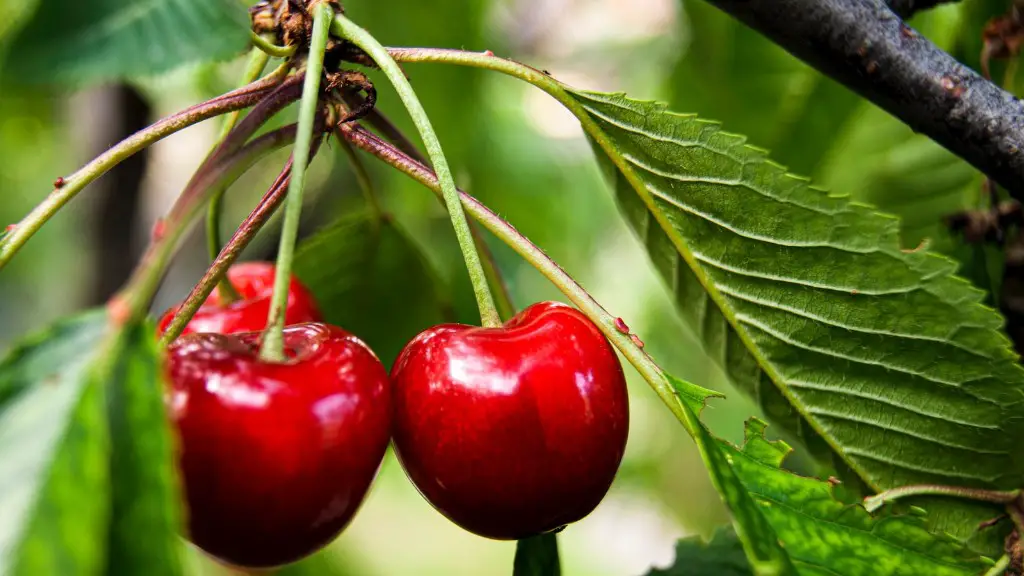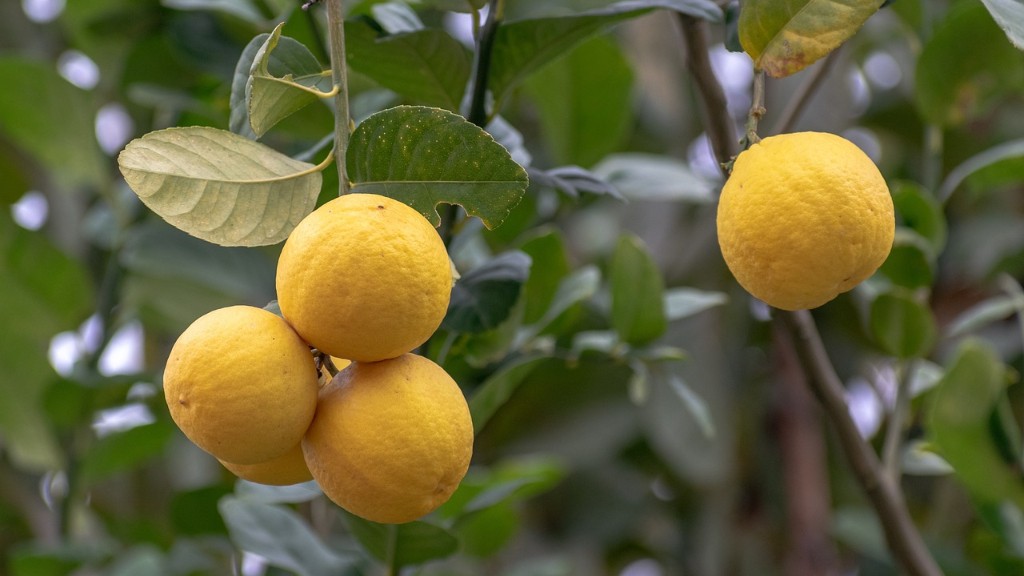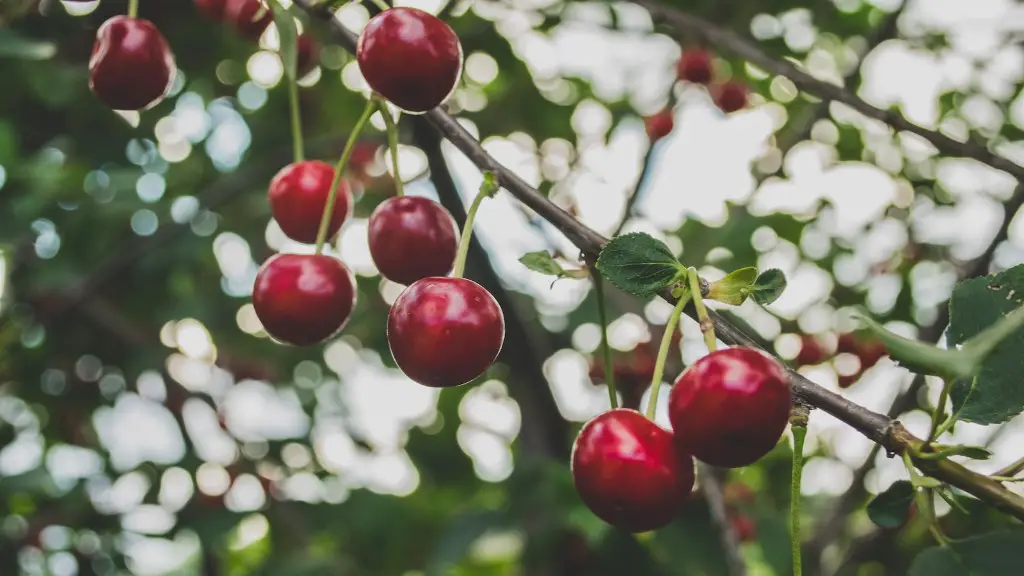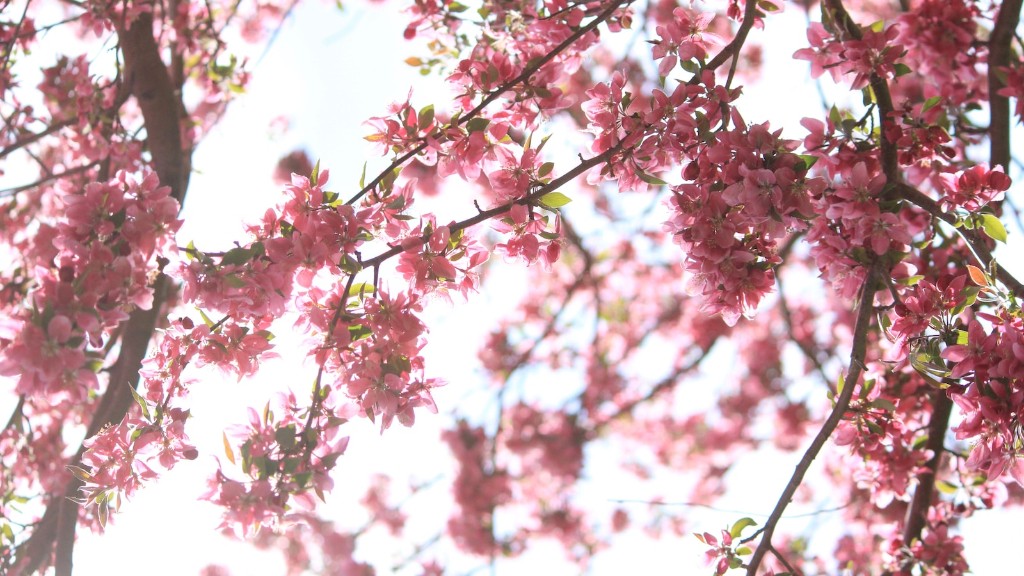Raising an apple tree from a seed is a rewarding experience, providing a fantastic opportunity to learn the basics of horticulture and grow your own unique tree. It is a relatively simple process for gardeners of all skill levels, and following the simple steps below will ensure you harvest a bumper crop in no time!
The first step to raising an apple tree from a seed is to gather and prepare the seeds. Ideally, you should collect the seeds from a ripe apple of the variety you wish to grow. Then, remove any surrounding flesh, rinse the seeds and dry them on a paper towel. Once dry, place the seeds in an airtight container and store in a refrigerator for around two months to mimic natural winter conditions.
The next step is to plant the seeds. Plant each seed individually in a small container filled with a well-draining compost or soil mix. Place the seeds in a warm, sunny spot and water thoroughly, then cover lightly with soil. Keep the soil moist and in around two weeks you should start to see seedlings.
Once the seedling is well-established, it is time to transplant it into the soil. Make sure to select a location with plenty of direct sunlight and well-draining soil. Dig a hole twice the diameter of the container and deep enough so the seedling is set no deeper than it was in the container. Gently transfer the seedling to the new location, filling any gaps with soil, and water thoroughly. Provide the tree with deep watering several times a week for its first few months.
To ensure your tree produces quality fruit, make sure to prune it as it grows. Snipping or cutting off any branches that grow too close together, as well as any diseased or dead branches, can help to promote healthier growth and fruiting. Establishing a regular pruning routine will help your apple tree stay healthy and productive.
Finally, you must be patient and allow the remaining months to pass before you can begin to harvest your apples. Once you spot the first signs of fruit, watch for the best time to pick your apples. Regularly inspecting the fruit for signs of disease is important and harvesting apples at the optimal time will ensure you enjoy the most flavoursome fruits.
Protecting Your Apple Tree
In order to produce a large harvest, it is important to protect your apple tree from pests and diseases. Visually inspecting your tree’s environment and removing any pests or dead branches regularly is a good first step. Additionally, establishing a regular mulching and fertilising routine can further protect the tree and improve soil quality.
If your tree has been affected by pests or disease, you can look into various safe, natural remedies. These can range from homemade solutions such as spraying with garlic or chives, to the use of certified organic sprays. Preventative treatment such as regularly spraying with horticultural oil can also help fend off any potential pest invasions.
Lastly, it is important to select the right variety of apple for your local area to ensure lasting success. Take into account the climate and soil quality, as well as any potential pests or diseases. Educating yourself on the characteristics and needs of different apple varieties can help you make an informed decision and provide the best chance of success.
Fertilising Your Tree
In order to keep your apple tree healthy and to ensure maximum fruit yield, you must provide it with proper nutrition. In early spring, you should use a commercial or homemade liquid fertilizer, such as fish emulsion, and lightly spray over the soil and onto the base of your apple tree. Additionally, regular mulching at the base of your tree can help to protect roots, reduce erosion and retain moisture.
You should pay particular attention to the nutrient requirements of the particular apple variety you have selected. Different types of apples may have different needs and requirements, meaning some may need more phosphorus, whereas others may need more nitrogen. Fertilisers are usually formulated to provide a mix of nutrients needed depending on the particular variety, but if not, you can rotate different types of fertilizers throughout the season.
Tomatoes, legumes and other nitrogen-fixing plants can also be added to the soil around your tree to provide natural nutrition. A basic soil test can also help you identify your Tree’s exact nutritional needs, enabling you to customize a fertilisation plan accordingly.
Pruning Your Apple Tree
Proper pruning is essential for a healthy, productive apple tree. Begin pruning young apple trees early by removing any dead or diseased branches, as well as any branches that appear weak or crossed. This will ensure good air circulation and promote strong, healthy growth.
Complete any pruning during the late winter months when the trees are dormant and before any buds appear. Always make sure to prune in the correct direction, cutting away from the main branches, and to leave the topmost branches untouched. Pruning should also be done while wearing thick, protective gloves as well as long-sleeved clothing to avoid any cuts or abrasions.
Because there are many different pruning techniques available, make sure to research the particular one which is most suitable for your particular apple tree. Thinning out branches is a great way to reduce crowding and improve the structure of your tree.
Pollarding is another pruning technique which is great for young trees, as it encourages vertically growing branches, reducing the amount of overall space taken. Shaping is another option and one of the most popular techniques for established apple trees, as it helps to promote directly opposite branches for optimum fruit production.
Harvesting Your Apples
A large part of the joy in growing your own apples is the harvest period. Apples can be harvested when the fruit’s colour darkens, when they become fragrant, or when they come away from the tree with a gentle twist. Additionally, you should monitor them closely to ensure they are picked before birds or other pests can get to them first.
If you find that the fruit is not ripening at the same rate, you can pick the ready ones first and wait for the rest. Covering the apple tree with a net can help to eliminate birds, and tying a bright-coloured ribbon near the ripening fruit can help to remind you of which apples still need to be picked.
Depending on the variety, apples can be kept in cold storage or consumed fresh. For cold storage, make sure to pick your apples as soon as they are ripe and brush off any leaves and debris. Inspect the apples closely, removing any that have obvious signs of damage. Store the apples at low humidity and around 30°F, and regularly check them for any signs of rotting or other damage.
Curing Your Apples
If you have picked your apples a bit early and they need to soften, you can use a curing process. Place the apples in a warm, humid spot and leave for between a few days and a few weeks, depending on how hard they are. Check the apples regularly to ensure they do not rot and do not leave for too long as apples can become overripe.
If you are storing your apples for later consumption, such as for cooking or juicing, you can use a central storage system. Place selected apples, washed and with all bruises removed, in a cardboard box or perforated plastic container and place it in a cool, shaded place. Inspect regularly and in around two weeks, all the apples should be ready. Apples stored in this way should be kept at low humidity, around 30°F, and should last around four to six months.
Encouraging Pollinators
Pollinators are an essential part of any successful apple crop. Encouraging pollinators to your garden will help your apple tree to bloom and, ultimately, produce delicious fruit. One of the best ways to attract beneficial pollinators is to create a diverse and friendly habitat. Plant a variety of bee-friendly flowers and fill the garden with plenty of wildflowers, herbs, and shrubs for insect foraging.
You can also place bee nesting boxes in your garden. Relative to their size, solitary bees are some of the most important pollinators of apple trees, so providing them with homes where they can lay eggs and hibernate is a great way to keep your apple tree healthy. Alternatively, you can buy hives of honeybees to add to your garden.
Finally, make sure to keep your garden as chemical-free as possible and avoid any harsh insecticides or herbicides. These can discourage insect pollinators, and have been linked to the reduction of bee and pollinator populations around the world.





